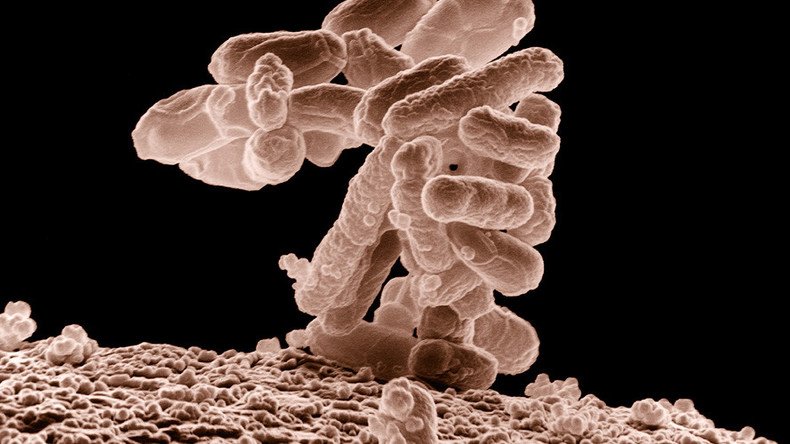Antibiotic-resistant ‘superbug’ reaches the US for the first time, sets root in Penn.

An antibiotic-resistant superbug has reached the US, sparking fears of a possible “end of the road” for antibiotics. The deadly bacteria has taken root in Pennsylvania, where a woman was tested positive for it.
In was found in April in a 49-year old woman, who arrived at a hospital in Pennsylvania, showing symptoms of an urinary tract infection, according to a study published in Antimicrobial Agents and Chemotherapy, a publication of the American Society for Microbiology.
Defense Department researchers determined that the woman carried a strain of E. coli, which was first found in the UK in 2008. However, this superbug is quite unique because its genetic changes make it resistant to the antibiotic called colistin. Due to colistin’s side effects it has been known as a last resort against multi-drug-resistant strains of bacteria, including the “nightmare bacteria” carbapenem-resistant enterobacteriaceae, or CRE.
Excessive antibiotic use has made them ineffective on 50% of children – scientists https://t.co/5SWbuvXLrspic.twitter.com/DIqu6ydlMp
— RT UK (@RTUKnews) March 16, 2016
“The recent discovery of a plasmid-borne colistin resistance gene, mcr-1, heralds the emergence of truly pan-drug resistant bacteria,” the researches wrote. “To the best of our knowledge, this is the first report of mcr-1 in the USA.”
This mcr-1 gene sits on a piece of material called a plasmid and can be passed from one bacterium to another. If it happens that an E. coli bacterium that has mcr-1 gene passes it to another superbug with other mutations, even a stronger superbug can be created and it would resists all known antibiotics.
“It basically shows us that the end of the road isn’t very far away for antibiotics – that we may be in a situation where we have patients in our intensive-care units, or patients getting urinary tract infections for which we do not have antibiotics,” CDC Director Tom Frieden said.
The scientists have also determined that the mcr-1 carrying colistin-resistant E. coli is resistant to other antibiotics such as ampicillin, streptomycin, sulfisoxazole, and tetracycline.
According to the Centers for Disease Control and Prevention, more than two million people get infected by drug-resistant germs each year. At least 23,000 die of their infections. So far, America’s biggest killer has been diarrhea-causing C. difficile.
3-minute test to detect superbugs and potentially E. coli & venereal diseases trialed https://t.co/qR6eAdVYoSpic.twitter.com/VF4rxvw1W0
— RT (@RT_com) January 10, 2016
CDC officials are now working with Pennsylvania health authorities, trying to find put how the patient may have contracted the bacteria. The woman has said that she had not traveled anywhere at least five months prior to the test, which means that it is highly possible that it has already been in the US, but unnoticed until recently. People in the area and those who were in contact with the woman will be tested as well to see if they are carrying the bacteria.
It is hard to tell how spread this superbug is since it has been only three weeks of testing.
"We know now that the more we look, the more we are going to find," Frieden said in a speech at the National Press Club in Washington. "The more we look at drug resistance, the more concerned we become."












